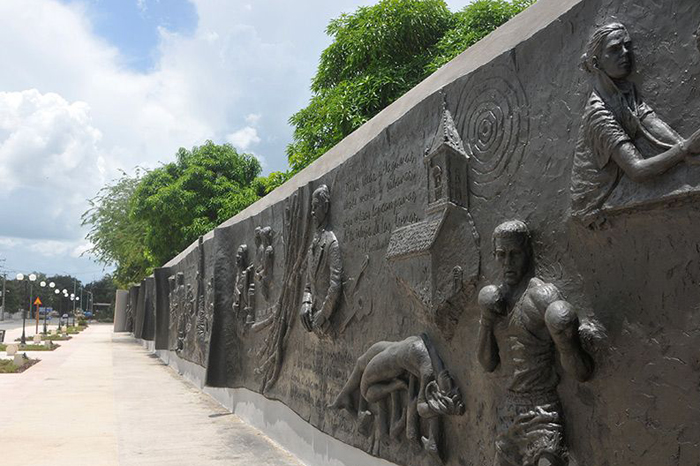
A journey through some of the facts, personalities, and relevant events of Las Tunas stands out in the relief of the history mural located on the façade of the agricultural market El Mambí, in the populous Francisco Varona Avenue, in this city.
Las Tunas, Cuba.- With more than 50 meters in length, the work of the Tunas artist Nóver Olano Escobar, recreates through the sculptural group, the beginnings of the identity of the Balcony of the Cuban East from its first inhabitants to epic moments of the revolutionary struggle and other current summits.
The large-scale project was carried out in the technique of modeling and cement casting, in which the sculptors Armando Rivero and Leandro Miguel Olano also participated, playing a leading role in the design and proper assembly of the pieces.
The uprising of slaves in the gold mines of Jobabo in 1533, an event without precedent in historical documents or archives of those years, is a particularly proud feature of one of the scrolls that make up the monument.
Remarkable figures stand out in the sketch of the mural: Máximo Gómez for his relevance in the iconic battle of Palo Seco, in the municipality of Jobabo; Che, and Camilo during the guerrilla struggles and the irrefutable image of Juan Cristóbal Nápoles Fajardo -El Cucalambé- as the maximum expression of the culture and idiosyncrasy of Las Tunas.
Vicente García González, the greatest general and bravest of the Tuneros, becomes a distinctive symbol of this creation, mounted on his horse and with his machete in combat position as he sets fire to the city before it falls into enemy hands; in the middle of the flames the phrase that immortalizes his greatness: Quemada antes que esclava (Burned before being a slave).
Other social events from the literacy campaign, sporting disciplines such as boxing and baseball, the workers' struggles accompanied by the figure of the leader Amancio Rodríguez, the emblematic sculpture of the Fuente de las Antillas and even, on a large scale, the coat of arms of the province, are some of the elements that make the mural more than a place of art, a space of encounter with the roots.
A summary of the most significant events during the different stages of the formation of what is today Las Tunas takes place right there; an artistic reflection of identity for current and future generations.





